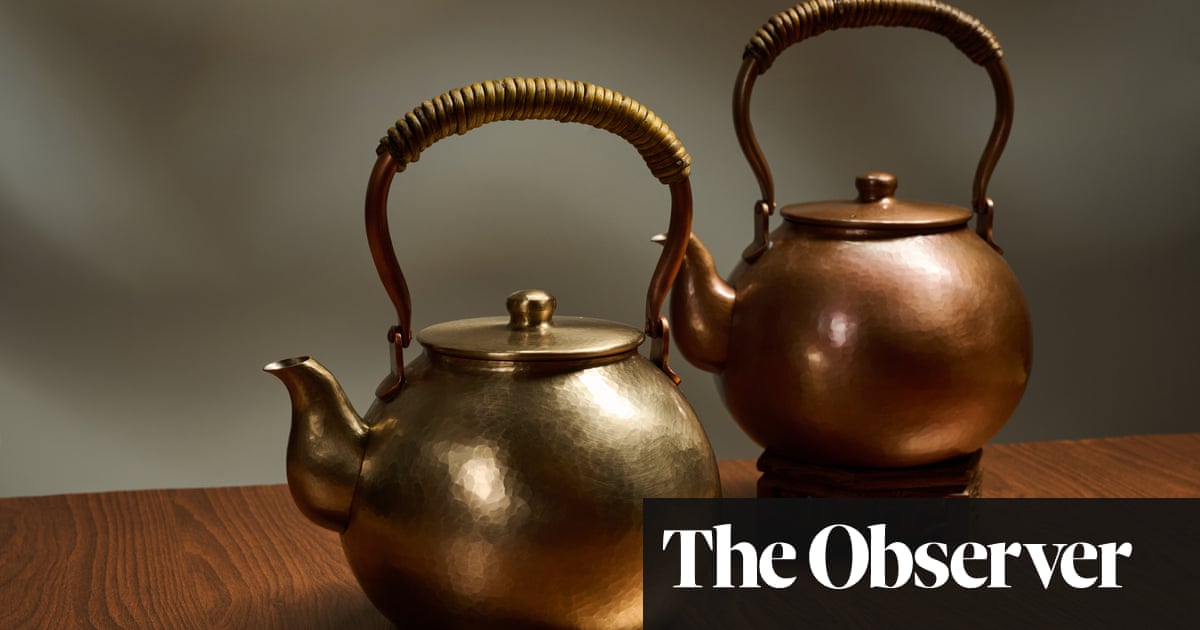The British think the cuppa is their national treasure, but a new interest in tea sets among young people is bringing with it an interest in the international cultural significance of the teatime ritual.
Online vintage homeware marketplace Vinterior reports a six-fold increase in teapot purchases over the past six months, while sales at John Lewis are up 22%. The Ulla Floral fine teapot in a gift box is its current bestseller. Asurvey of 2,000 millennialsby the home improvement store B&Q earlier this year found that 26% of those surveyed think teapots are back in fashion.
The trend is driven by the enduring traditional homeware aesthetic known as cottagecore. Online marketplace Etsy included the intriguing specific “French cottage” as one of itskey trends for 2025as it says searches for “French cottage decor” are up 26,000% from last year. The practice of “tablescaping”, the Instagram-friendly trend for setting up intricate and artistic table placements, has also driven sales as people search for eye-catching china.
“There is nothing more whimsical than a teapot,” said a spokesperson for Vinterior. “Many people automatically think of classic chintz – à la Women’s Institute – but [there is a] huge breadth of design-led teapots available, including designs by [postmodern Italian designer] Ettore Sottsass and classic art deco styles.”
Teapots have captured artists’ and designers’ imagination of late. The Pet Shop Boys issued atea setto celebrate the band’s 40th anniversary – created by graphic designer Mark Farrow with Duchess China – while teapots were a highlight of the recentMilan design week.
Spanish fashion house Loewe – whose creative director Jonathan Anderson announcedhis move to Diorlast week – held an exhibition at Milan of artist-made teapots including designs by ceramicistEdmund de Waaland designer David Chipperfield alongside less practical creations, such as a wonky tea urn by German conceptual artist Rosemarie Trockel and a teapot by Patricia Urquiola which looks like a purple squirrel.
At next month’sLondon craft week(LCW), teapots are also taking centre stage. Ceramicist Ömer Öner’s colourful work will appear at the Craft In Evolution exhibition at the Oxo Tower gallery while metalworkers Takeshi Fujii and Crystal Liew’s joint collection of teapots and kettles will be on show atCraft on Peel and Hketo at the Royal Society of Sculptors.
Luxury tea brandNewby Londonis hosting the exhibition, New Forms: Tea and Contemporary Design, at their Clerkenwell showroom during LCW. Nirmal Sethia, chair of Newby Teas, has the world’s greatest collection of teaware, collected and named in honour of his wife, Chitra. Sethia designed the world’s most expensive teapot,the Egoist, which is covered in 1,658 diamonds and 386 rubies, with a handle made of mammoth ivory, and is designed to hold a single cup of tea.
“Teaware is a reflection of culture, artistry and the evolution of human connection,” says Sethia. “For over 5,000 years, the design and craftsmanship of teapots, cups and other teaware have mirrored the values, aesthetics and rituals of the societies that created them.
“To understand the history of teaware is to understand the role tea has played in shaping economies, social customs, and artistic movements. In today’s world, where mass production often overshadows traditional skill, it becomes ever more important to protect and promote craftsmanship and artists.”
This is a point made by both Liew and Fujii, artists with Malaysian and Japanese heritage respectively. “Teapots hold significant cultural importance in my heritage, representing a rich tea culture that I deeply value,” says Liew. “Over the years, I have noticed a shift in attention and appreciation for this tradition. As part of the younger generation, I hope that through our new interpretations we can breathe fresh life into this traditional figure and preserve its legacy.”
Fujii believes that, as an enduring and practical piece of kitchenware, teapots are a record of the craft and influences of local makers. His are made using “Tsubame-Tuiki-douki”, a metal-beating technique from Tsubame, Niigata prefecture, where he grew up. “These are tools that allow the user and those who spend time with them to enjoy daily richness and peace of mind. They are also important, familiar tools that are needed to enjoy those moments.”
More high net worth individuals arecollecting handcrafted objectsand recognising their artistic value and at the same timemore people are taking up craftingas a meaningful hobby or side-hustle. The intersection of craft, tradition and art is important to current creative industries – and teapots fit into this perfectly.
As a craft project, though, they’re probably best left to the professionals. Emily Johnson is director of 1882 Ltd, a Stoke-on-Trent pottery company which collaborates with artists such as Max Lamb and Giles Deacon.
Johnson says: “Teapots are one of the most complex things for a pottery factory to make. A very posh teapot requires holes punctured in the body, a spout cast off and stuck on in clay, a handle cast off and stuck on in clay, and the nob of the lid cast off and stuck on. And then don’t get me started on whether the spout drips or not.”
